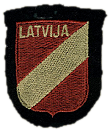A10 305 336
In addition to the motion to recuse, the Service contends that the photo display including the respondent's photograph was admissible and should have been considered by the immigration judge. It also contends that a picture of the respondent in his visa application was admissible and should not have been excluded from the record. The Service also contends that because of the immigration judge's bias, his finding that there was not clear, convincing and unequivocal evidence of deportability was in error. Therefore, it requests that this Board conduct its own Independent factual review of the record and rule in its favor. See Carrasco-Favela v. INS, 445 F.2d 865 (9 Cir.), cert. denied, 405 U.S. 1030 (1971); Noverola-Bolaina v. INS, 395 F.2d 131 (9 Cir. 1968); Matter of B-, 7 I&N Dec. 1 (BIA 1955).
The Service has also submitted a motion to reopen the deportation proceedings in order to examine two more pieces of evidence, one of which is an Iron Cross decoration given to the respondent bearing the signature of Adolph Hitler and the designation, Waffen S.S. The other piece of evidence submitted by the Service in its motion to reopen is a copy of a photograph of the respondent in a book allegedly written by him in Latvian that is the same photograph that was ruled inadmissible as part of the photographic display. In accordance with our usual practice, we will engage in an independent review of the record. The respondent requests that the case be resolved on the basis of the present voluminous record in order to clear his name within his lifetime. The respondent is presently 75 years old and had had four heart attacks by the time of the deportation hearing. He specifically declined to apply for any discretionary relief from deportation despite the fact that his native country is still annexed within the Soviet Union (Tr. p. 1958).
SUMMARY OF TESTIMONY
The Service's first allegation is that during July 1941, after the German army arrived in Latvia, Latvian collaborators rounded up a large number of Jews and took them to the Riga police station (Tr. p. 18-191, 200-2042, 478-4813). At the police station, those arrested were subjected to indignities, assaults, and beatings by Latvian guards. According to the testimony, the person supervising these atrocities was referred to by the guards and some victims, as "Hazners" or "Captain Hazners" (Tr. p. 16-384, 200-2125, 478-5036). Three government witnesses made photographic identifications of the respondent as being the "Hazners"
4
| 1 | Testimony of Ber Mendelkorn, 25-October-1977, direct, transcript pp. 15–93. |
| 2 | Testimony of Mendel Wulfowitz, 26-October-1977, direct, transcript pp. 199–232A. |
| 3 | Testimony of Shabtai Dolgizer, 31-October-1977, direct, transcript pp. 475–517A. |
| 4 | Testimony of Ber Mendelkorn, 25-October-1977, direct, transcript pp. 15–93. |
| 5 | Testimony of Mendel Wulfowitz, 26-October-1977, direct, transcript pp. 199–232A. |
| 6 | Testimony of Shabtai Dolgizer, 31-October-1977, direct, transcript pp. 475–517A. |
